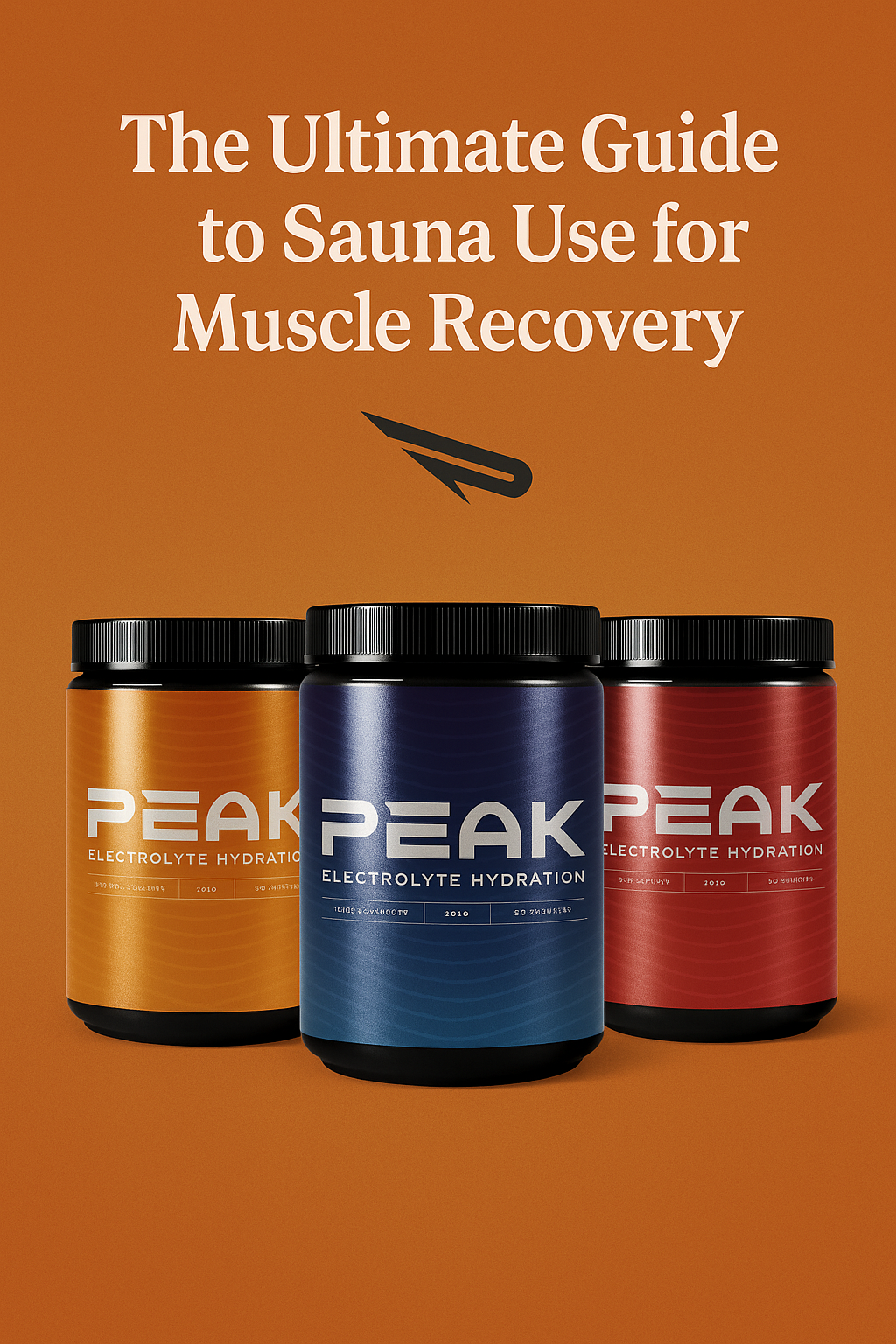
The Ultimate Guide to Sauna Use for Muscle Recovery
Share
The Ultimate Guide to Sauna Use for Muscle Recovery
Optimizing Recovery, Performance & Wellbeing Through Heat and Hydration
Introduction
Recovery is more than just rest. It’s a science-driven process that, when optimized, enhances performance, accelerates healing, and improves long-term health. Sauna therapy — used in cultures for centuries — has been rediscovered by modern athletes, longevity seekers, and wellness experts for its powerful restorative effects.
This guide will explore how sauna sessions support muscle recovery, how to use them effectively, why hydration is essential to the process, and how you can make the most of each session with simple, science-backed strategies.
Why Saunas Are Essential for Recovery
When exposed to controlled heat, your body initiates a cascade of adaptations that support muscular and systemic recovery. Blood vessels dilate, increasing oxygen delivery to fatigued tissue and promoting nutrient flow. Heat also triggers the release of heat shock proteins — key compounds that help repair damaged cells and improve muscle adaptation (Ihsan, Watson and Abbiss, 2016; Stanley et al., 2015).
Sauna use has also been shown to improve cardiovascular efficiency, lower inflammation, and reduce delayed onset muscle soreness (DOMS) — effects that promote better training continuity and performance (Laukkanen et al., 2015). In one study, athletes using sauna post-exercise improved endurance by over 30% in just three weeks (Stanley et al., 2015).
Importantly, sauna therapy promotes deep relaxation, helps regulate stress hormones like cortisol, and improves sleep — all of which are crucial for muscle repair and systemic recovery.
However, intense heat exposure leads to sweat loss and significant depletion of both fluid and electrolytes. Failing to rehydrate properly can compromise the very recovery benefits sauna use is intended to support (Casa et al., 2000).
How Often and How Long Should You Use a Sauna?
Frequency
For most people, 3–5 sessions per week is optimal.
Studies show that even 2–3 sessions can improve circulation, reduce inflammation, and accelerate recovery from physical stress (Kunutsor et al., 2017).
Duration
Aim for 15 to 30 minutes per session depending on your comfort and heat tolerance. A temperature of 70–90°C is typical. Higher heat may require shorter duration, while moderate temperatures support longer, restorative exposure (Stanley et al., 2015).
Timing
Using the sauna within an hour after training maximizes the impact on inflammation and muscle repair (Ihsan, Watson and Abbiss, 2016). On non-training days, sauna still provides circulatory and immune benefits.
Key reminder: extended heat exposure increases fluid and mineral loss — hydration before and after each session is essential to maintain blood volume and cellular repair (Sawka et al., 2007).
Why Hydration Matters After Sauna Use
Sauna-induced sweat loss can total over a litre of fluid in a single session — along with essential electrolytes like sodium, potassium, and magnesium (Casa et al., 2000). These minerals regulate muscle function, nerve signaling, and hydration status.
Failing to replenish them can result in fatigue, cramping, poor muscle repair, and impaired focus.
Electrolyte-rich hydration helps:
-
Maintain muscular and nervous system function
-
Prevent post-sauna fatigue and dizziness
-
Accelerate recovery by supporting metabolic balance
Using a high-quality electrolyte blend post-sauna ensures you’re not just recovering — you’re optimizing.
Best Practices for Sauna Recovery
-
Hydrate beforehand: Enter each session fully hydrated.
-
Use sauna after workouts: This enhances muscle regeneration and reduces soreness.
-
Split longer sessions: Two 15-minute stints with a cooldown in between can improve comfort and benefits.
-
Listen to your body: If you feel faint or overly fatigued, exit and cool down slowly.
-
Replenish fluids + electrolytes: Water alone isn’t always enough. Rehydration with added sodium, potassium, and magnesium is key to full recovery (Sawka et al., 2007).
Conclusion: Make Sauna a Recovery Ritual
Sauna use is a powerful tool for improving healthspan, resilience, and performance — but it works best when paired with strategic hydration and recovery practices.
Just a few sessions each week can reduce soreness, boost endurance, and support both mental and physical wellbeing. Add proper hydration, and you elevate your recovery to a new level.
Train hard. Recover smarter. Live better.
Exclusive Offer
Support Your Recovery With Hydration That Works
Our premium Electrolyte Hydration Blend is designed to replenish what’s lost during sauna sessions — helping you feel better, recover faster, and perform at your best.
Use code: HYDRATE10 at checkout
Get 10% off your first purchase
👉 Shop Now
References
Casa, D.J., et al. (2000) 'National Athletic Trainers' Association Position Statement: Fluid Replacement for Athletes', Journal of Athletic Training, 35(2), pp. 212–224.
Ihsan, M., Watson, G. and Abbiss, C.R. (2016) 'Post-exercise muscle cooling: Human perspectives', Temperature, 3(2), pp. 220–237.
Kunutsor, S.K., et al. (2017) 'Frequent sauna bathing is associated with reduced risk of stroke', Neurology, 89(21), pp. 2321–2326.
Laukkanen, T., et al. (2015) 'Association between sauna bathing and fatal cardiovascular and all-cause mortality events', JAMA Internal Medicine, 175(4), pp. 542–548.
Sawka, M.N., et al. (2007) 'American College of Sports Medicine position stand: Exercise and fluid replacement', Medicine and Science in Sports and Exercise, 39(2), pp. 377–390.
Stanley, J., et al. (2015) 'Heat acclimation improves exercise performance', Sports Medicine, 45(12), pp. 1699–1716.
